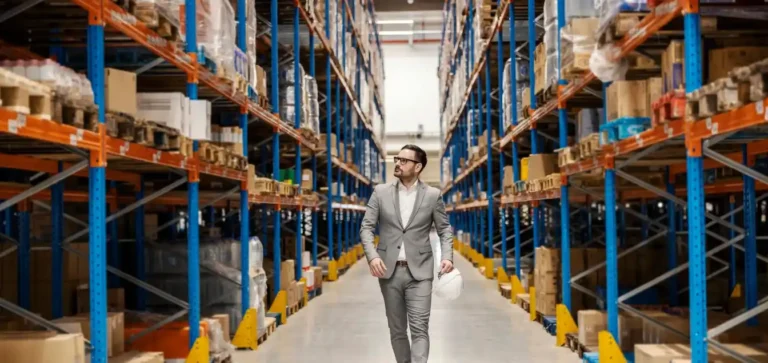In the ever-expanding world of ecommerce, efficient and accurate order fulfillment is crucial for customer satisfaction and business growth. One of the most fundamental methods of order fulfillment is piece picking, a process where individual items are picked and assembled for each order. This article provides an in-depth guide to piece picking, exploring its importance, different methods, challenges, and solutions in the context of e-commerce businesses.
Table of Contents
Understanding Piece Picking
Piece picking, also known as “pick and pack”, involves selecting specific products from a warehouse or storage facility to fulfill individual orders. It’s the most granular form of order picking, often requiring a high level of accuracy due to the variety and quantity of products involved. This method is particularly prevalent in businesses dealing with a wide range of products, small order sizes, or those requiring a high level of customization.
Importance in Ecommerce
The significance of piece picking in ecommerce cannot be overstated. As online shopping continues to grow, customers expect faster, more accurate deliveries. Efficient piece picking directly impacts delivery times, accuracy, and ultimately, customer satisfaction. It’s also crucial for inventory management, as it helps in tracking product availability and demand patterns.
Piece Picking Methods
- Manual Picking: The most basic form, where workers physically pick items from shelves. It’s flexible but can be time-consuming and prone to errors.
- Pick-to-Light Systems: Utilize lights and LEDs to indicate the location and quantity of items to be picked, increasing accuracy and speed.
- Voice Picking: Workers use voice commands to receive instructions through a headset, keeping their hands and eyes free for picking.
- Automated Picking: Involves the use of robots and automated systems to pick items, ideal for high-volume businesses.
- Zone Picking: Workers are assigned specific zones in the warehouse and only pick items within that zone, reducing travel time.
- Batch Picking: Multiple orders are picked at the same time to reduce the number of trips around the warehouse.
Each method has its advantages and is suitable for different types of ecommerce operations based on factors like order volume, warehouse size, and product variety.
Read more: When is a Good Time to Hire a Fulfillment Center?
Challenges in Piece Picking
- Accuracy: Mis-picks can lead to wrong deliveries, returns, and dissatisfied customers.
- Efficiency: Slow picking processes delay order fulfillment and affect customer satisfaction.
- Scalability: As the business grows, the piece-picking process must adapt to handle increased order volumes.
- Cost: Efficient picking requires investment in technology and training, which can be costly for small businesses.
- Ergonomics: Manual picking can be physically demanding, leading to worker fatigue and potential errors.
Solutions and Best Practices
Technology Integration: Implementing systems like barcode scanners, RFID technology, and warehouse management software can significantly increase accuracy and efficiency.
Training and Incentives: Regular training and incentive programs can motivate workers and improve picking accuracy.
Layout Optimization: Organizing the warehouse layout to minimize travel time and ensure fast-moving items are easily accessible can significantly improve efficiency.
Scalable Systems: Investing in scalable solutions that can grow with the business, like modular automated systems, ensures long-term efficiency.
Continuous Improvement: Regularly reviewing and updating picking processes based on feedback and data analytics helps in addressing issues and improving efficiency.
Future Trends
The future of piece picking in ecommerce points towards greater automation and integration of advanced technologies. The use of AI and machine learning for predictive analytics in inventory management, advanced robotic systems for automated picking, and integration of IoT devices for real-time tracking are trends likely to dominate the landscape.
Read more: Strategic Fulfillment Partnerships: A Catalyst for Business Growth
Conclusion
Piece picking is a critical component of the ecommerce supply chain. Its impact on customer satisfaction and operational efficiency makes it a vital area for investment and innovation. By understanding its nuances, challenges, and adopting the right strategies, ecommerce businesses can significantly enhance their order fulfillment processes, ensuring they stay competitive and responsive to customer needs in the fast-paced digital marketplace.
In summary, piece picking is more than just a logistical task; it’s a strategic element that plays a pivotal role in the success of ecommerce businesses. As technology evolves and customer expectations rise, the art and science of piece picking will continue to be a key focus for ecommerce businesses striving for excellence in customer service and operational efficiency.
Read more: Your Fulfillment Experts: Reliability Guaranteed
FAQ:
1. Can piece picking be automated?
Yes, piece picking can be automated with robots and automated storage and retrieval systems (AS/RS).
2. How can businesses choose the right piece picking method?
Businesses should consider factors like order volume, product variety, warehouse size, and available budget.
3. Why is piece picking important for ecommerce businesses?
It’s crucial for ensuring accurate and timely order fulfillment, directly impacting customer satisfaction.





